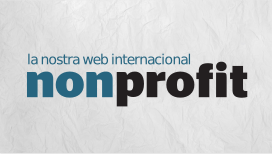The Parliament of Catalonia approves the 2011-2014 Cooperation Plan
The plan is the roadmap of the Government on development cooperation that provides the principles, values, geographic priorities and strategic objectives. The new plan concentrates the aid geographically and by sector, it strengthens the participation of different Catalan cooperation cooperation and also strengthens the mechanisms for monitoring and evaluation. It is expected that in 2015 the Catalan government will contribute 0.07 percent of its Gross Domestic Product (GDP) for development cooperation.
The Strategic Plan 2011-2014 reaffirms the commitment to three main aims: to promote equality between men and women, promote respect and complete the consolidation of human rights and democratic governance, and finally promote sustainability of development from the social, environmental and economic point of view.
To meet these objectives it sets four priority lines of action:
- 1. Development of priority countries and peoples. Projects to ensure prompt access to health education, trade and productive capacities, social services or basic human rights.
- 2. Development education. Promoting awareness and civic engagement of citizens and promote the values of solidarity and social justice.
- 3. Humanitarian action. Actions to meet the immediate needs and fundamental rights long after conflicts or disasters.
- 4. Strengthening the capacities catalan cooperation actors. Provide human resources, organizational and material resources required.
The Plan also continues the policy of geographic and thematic concentration that began with the previous documents.
- - Countries and peoples priorities: Morocco, Palestine, Western Sahara, Mozambique, Senegal, Guatemala, Nicaragua, El Salvador, Bolivia, Colombia and Ecuador. Concentrate 70% of resources.
- - Preferred regions: Andean and Amazon, Mesoamerica, the Mediterranean and West Africa. Concentrates 80% of resources for development.
- - Least developed countries: in sub-Saharan African countries with low income, nutrition, health and education and a high level of vulnerability. Receive at least 25% of resources.
- - Countries and Peoples in post-conflict situation or subject to serious human rights violations.















Afegeix un comentari nou